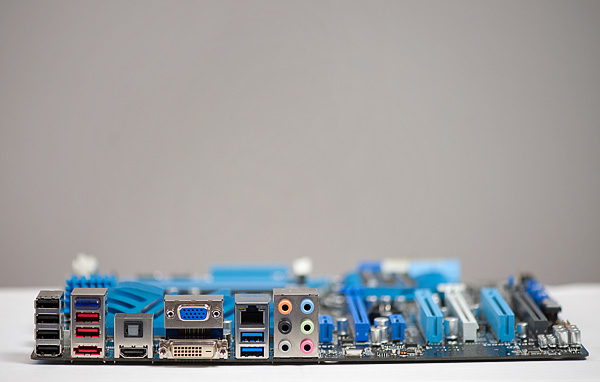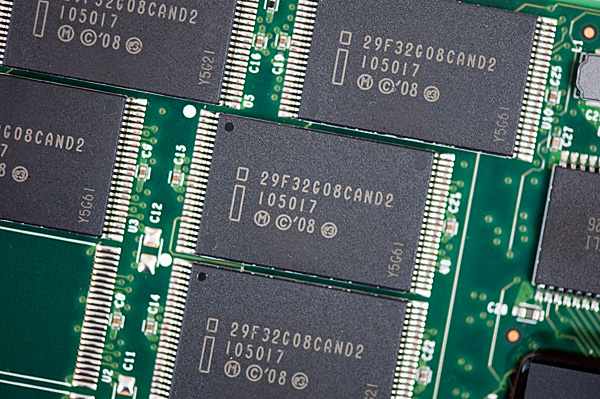Intel Z68 Chipset & Smart Response Technology (SSD Caching) Review
by Anand Lal Shimpi on May 11, 2011 2:34 AM ESTFinal Words
Intel's Z68 should have been the one and only high end launch chipset offered with Sandy Bridge. It enables all of the configurations we could possibly want with Sandy Bridge and does so without making any sacrifices. Users should be able to overclock their CPU and use integrated graphics if they'd like. While Z68 gives us pretty much exactly what we asked for, it is troubling that we even had to ask for it in the first place. With Intel holding onto a considerable performance advantage and a growing manufacturing advantage, I am worried that this may be a sign of things to come. It was strong competition from AMD that pushed Intel into executing so flawlessly time and time again, but it also put Intel in a position where it can enforce limits on things like overclocking. Let's hope that Z68 corrected a mistake that we won't see repeated.
Intel's Smart Response Technology (SRT) is an interesting addition to the mix. For starters, it's not going to make your high end SSD obsolete. You'll still get better overall performance by grabbing a large (80-160GB+) SSD, putting your OS + applications on it, and manually moving all of your large media files to a separate hard drive. What SRT does offer however is a stepping stone to a full blown SSD + HDD setup and a solution that doesn't require end user management. You don't get the same performance as a large dedicated SSD, but you can turn any hard drive into a much higher performing storage device. Paired with a 20GB SLC SSD cache, I could turn a 4-year-old 1TB hard drive into something that was 41% faster than a VelociRaptor.
If you're building a system for someone who isn't going to want to manage multiple drive letters, SRT may be a good alternative. Similarly, if you're building a budget box that won't allow for a large expensive SSD, the $110 adder for an Intel SSD 311 can easily double the performance of even the fastest hard drive you could put in there. The most obvious win here is the lighter user that only runs a handful of applications on a regular basis. As our tests have shown, for light workloads you can easily get the performance of an X25-M G2 out of a fast hard drive + an SSD cache. Even gamers may find use in SSD caching as they could dedicate a portion of their SSD to acting as a cache for a dedicated games HDD, thereby speeding up launch and level load times for the games that reside on that drive. The fact that you can use any SSD as a cache is nice since it gives you something to do with your old SSDs when you upgrade.
I believe there's a real future in SRT, however it needs to be available on more than just the highest end Sandy Bridge motherboards. I'd like to see SSD caching available on all Intel chipsets (something that we'll get with Ivy Bridge and the 7-series chipsets next year), particularly on the more mainstream platforms since that appears to be the best fit for the technology. I would also prefer a larger cache drive offering from Intel (at least 40GB) as it wasn't that difficult to evict frequently used programs from the SSD cache. The beauty of NAND is that we'll of course get larger capacities at similar price points down the road. Along those lines I view SRT as more of a good start to a great technology. Now it's just a matter of getting it everywhere.












106 Comments
View All Comments
JarredWalton - Wednesday, May 11, 2011 - link
Obviously, I missed changing the pasted text above. That's Bold, Italics, and underlined text. (And highlighted text is now gone, thankfully, so people talking about [H]OCP don't look weird. LOL)Mr Perfect - Thursday, May 12, 2011 - link
I hadn't though to try BBCode[\b[\i][\u].Thanks, Jarred.
Mr Perfect - Thursday, May 12, 2011 - link
Much less use it correctly...FlameDeer - Thursday, May 12, 2011 - link
Hi Jarred, about the option to do links, I have tried before, by using the below codes:[L=text]/[/L] = [L=AnandTech]http://www.anandtech.com/[/L]
The codes I put are
<L=AnandTech>http://www.anandtech.com/</L>
just replace the < > symbols to [ ] will do. :)
Hopefully Intel will be more concern about what the users really needs & not just simply apply their own set of rules to users by limiting certain functions as they like.
Good job of the review & take care, guys! :)
FlameDeer - Thursday, May 12, 2011 - link
Ops, not working, anyway I try again few codes here, if still not working then just abandon it.[ L ]/[ /L ] = [L]Text[/L]
[ A ]/[ /A ] = [A]Text[/A]
[ B ]/[ /B ] = Text
[ I ]/[ /I ] = Text
[ U ]/[ /U ] = Text
[ H ]/[ /H ] = [H]Text[/H]
therealnickdanger - Wednesday, May 11, 2011 - link
Obviously, a lot of time goes into these reviews, but I would really like to see an update using a 64GB Vertex 3 or other fast 64GB drive as the cache. I suppose that the only real improvement would be how many apps/files are cached before eviction. But the Vertex 3 is a LOT faster than the new Intel 311 or whatever it is...y2kBug - Wednesday, May 11, 2011 - link
Take this with a huge grain of salt. The following quote from the review makes me shiver “In my use I've only noticed two reliability issues with Intel's SRT. The first issue was with an early BIOS/driver combination where I rebooted my system (SSD cache was set to maximized) and my bootloader had disappeared. The other issue was a corrupt portion of my Portal 2 install, which only appeared after I disabled by SSD cache.”Don’t get me wrong, I’m not trolling. I was really looking forward to SSD caching. But my previous experience when I randomly lost all data on an Intel RAID 1 array without any signs of hard-drive failures made me skeptical in the Intel RAID software.
NCM - Wednesday, May 11, 2011 - link
Anand writes: "Paired with a 20GB SLC SSD cache, I could turn a 4-year-old 1TB hard drive into something that was 41% faster than a VelociRaptor."That's an assertion that really needs some heavy qualification, for instance by appending "at least sometimes and for certain things."
SRT is an intriguing approach on the part of Intel, but ultimately it comes across to me as insufficient and unfinished. I have little confidence in its ability to gauge what's important to cache as opposed to what's used more often. Those aren't the same things at all.
I'd like to see a drive approach where a limited capacity boot/application SSD is combined with a conventional HD within a single standard drive enclosure. This hybrid would present itself to the host as a single drive, but include a software toggle to allow selective access to each drive for setup purposes. You'd install the OS and programs on the SSD for rapid boot/launch, while user mass file storage would be on the HD. In normal use you wouldn't know, other than in performance terms, that two devices were involved.
Yes, I know that we can achieve much of that today by using separate SSD and HD devices. I have two such setups, one a server and the other a workstation. However they both require some technical attention on the part of the user, and it's not an approach that works in a laptop, at least not without big compromises.
LancerVI - Wednesday, May 11, 2011 - link
Can install OS on 1 60 GB SSD for example and then SRT a second 60 SSD for a 2 TB Raid 0 array?I've got two 60's in a Raid 0 now, but obviously, most of my programs are on seprate HDD's. If my above question is possible, maybe this is a way to split the difference as it were.
Any insight would be appreciated.
djgandy - Wednesday, May 11, 2011 - link
Considering you can pick up a 30GB SSD in the UK for £45, this seems like an easy way to get some performance increase for desktop productivity.http://www.overclockers.co.uk/showproduct.php?prod...